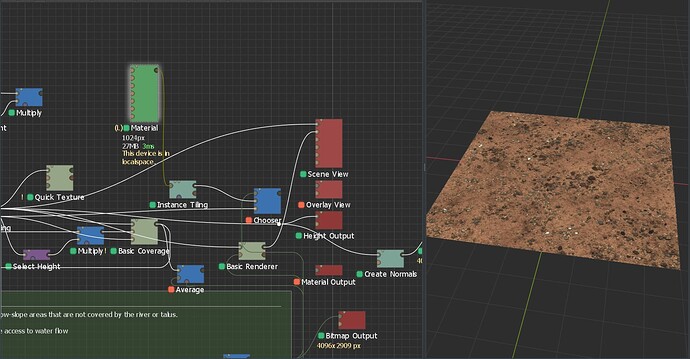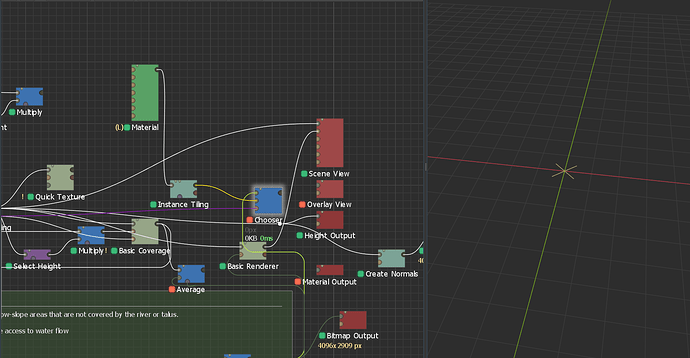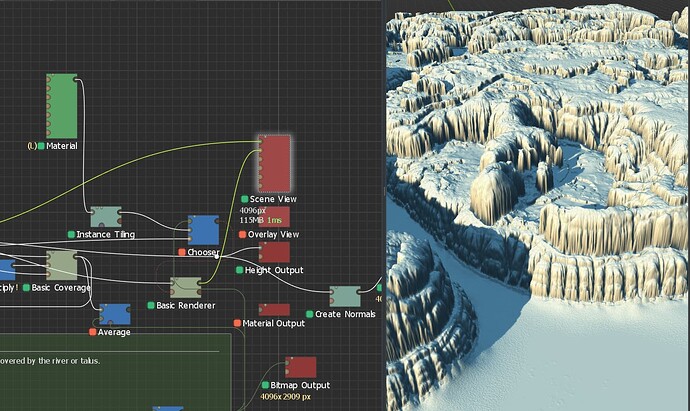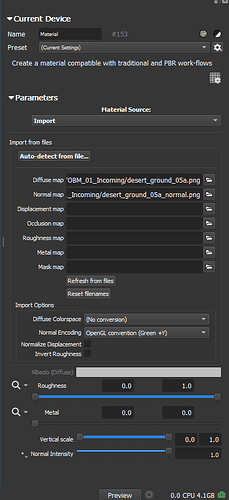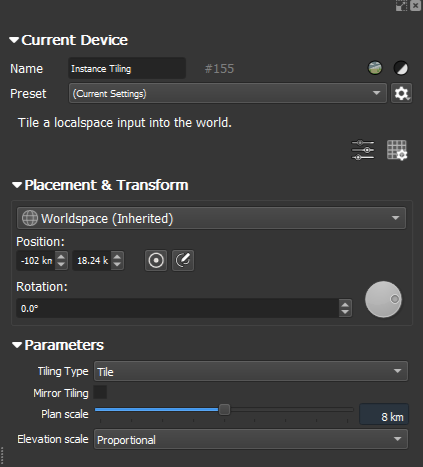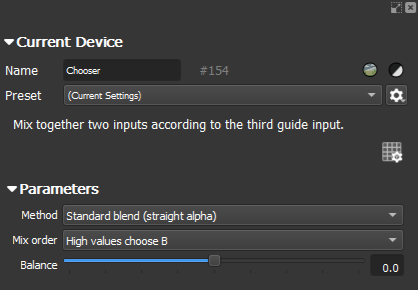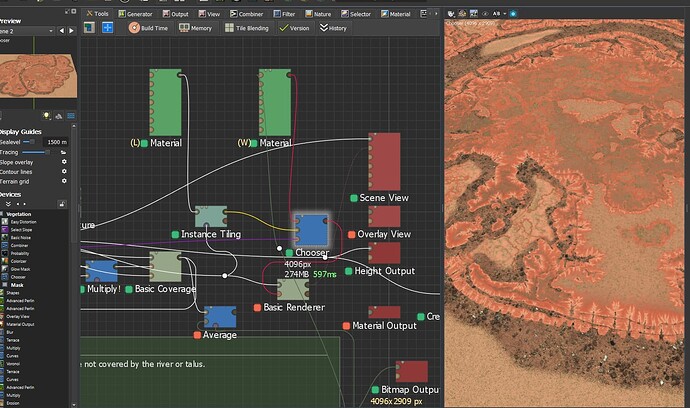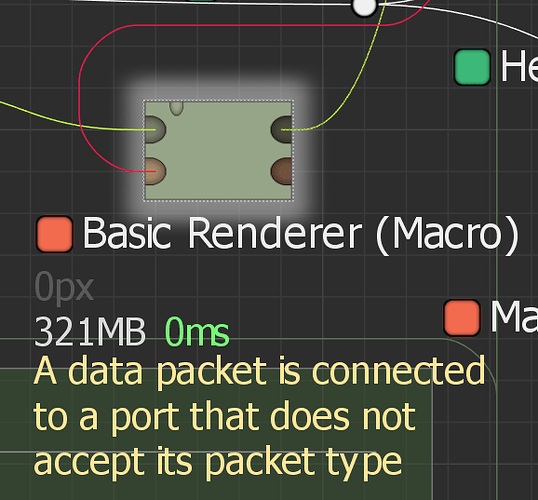Hey yall! I’ve got some mesas and plateaus that I’m modelling for the intro sequence of Operation: Black Mesa, and I would like to use a material for the talus erosion. I have this sand texture here i’m using.
I’ve set this and a normal map up in the material device, i’m passing that to a Tiling device, and I was going to feed that into a Chooser using the talus mask from the Thermal Weathering node, but when I put it all together I see absolutely no result.
And when I hook it up to the texture port on my Basic Renderer, the material just comes up white.
what am I missing?
2 Likes
if it’s helpful, here’s the parameters of my Materials Device:
Instance Tiling:
and the Chooser:
I imagine it has to do with the Material device being in local space, but it seems like the Tiling node should solve that…
2 Likes
Not sure which version of WM you’re using, but the issue seems to be the Chooser device, not necessarily the Material device. Make sure the textures you’re attempting to combine in the Chooser match type. For example, if your base color is a Bitmap and you’re trying to combine it with a tiled Material, it will fail.
If that is the issue, you should be able to just very quickly pipe your base color into just the diffuse channel of a Material device between it and the Chooser and you should be good to go!
2 Likes
good point! you gave me some food for thought, maybe I can tackle this from a new angle here.
2 Likes
interesting, it appears that running my main texture output through a material node seems to actually work well with overlaying the sand material with the talus mask, but it’s now not accepted by the Basic Renderer, giving me this error message:
2 Likes
Just as a quick look, the Basic Renderer macro only accepts a Bitmap for the texture, so yeah, that would be the expected results. You have a couple options here, just on first glance:
-
If you don’t mind discarding all the PBR data from the material, and only need the diffuse/color information for your use, you can use the Composite Type Utility device to pull out just the diffuse layer of your material (I’m assuming you’re importing a material directly into the device). Alternatively, you could use the File Import and only import the diffuse map.
-
If you want to keep all the data present, rather than piping the combined material into a Basic Renderer you could use the same Composite Type device from above after the Chooser, pull out the final diffuse channel, pipe that into the Basic Renderer , then, using a second Composite Type (or a new Material), pipe the output of the Basic Renderer into the diffuse, and just take all the other channels from the first Composite Type and send them straight over for your final combined material with height/normal/metalness etc intact.
This may be easier in newer versions, I don’t know if there’s a Combiner that works with materials where you could just toss a Bake Lighting device in on top to essentially replace the Basic Renderer macro, assuming you’re just looking for the lighting data.
3 Likes
The basic renderer macro is an older device that doesn’t support PBR materials.
Since it bakes the lighting into the texture, the result would always be prelit. This may or may not be what you want. If it IS what you want, you can use the workflow outlined above - extract the diffuse channel, bake the lighting into it, and recombine. The Tap device is actually intended for exactly this purpose. You can connect it inline with a composite material and extract or replace individual channels.
4 Likes
thank yall so much! I had no idea the Basic Renderer macro doesn’t support pbr but that’s fine, I was just using it for a lighting preview and would like to export a regular diffuse anyway, along with the other maps separately. Yall totally helped me figure it out, I appreciate it!
3 Likes

